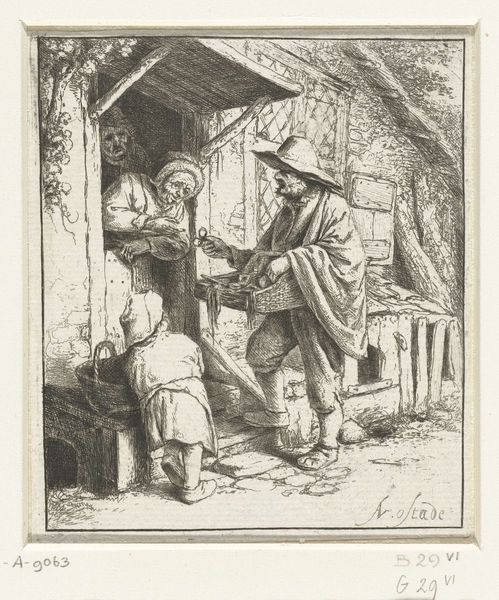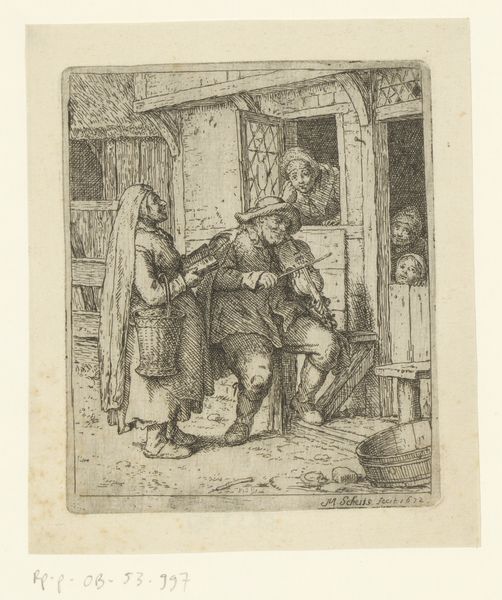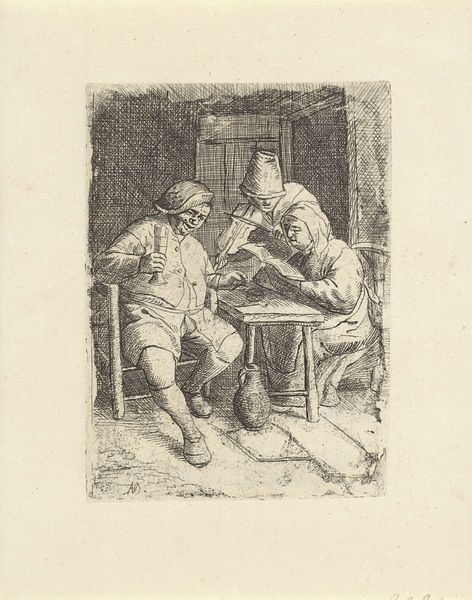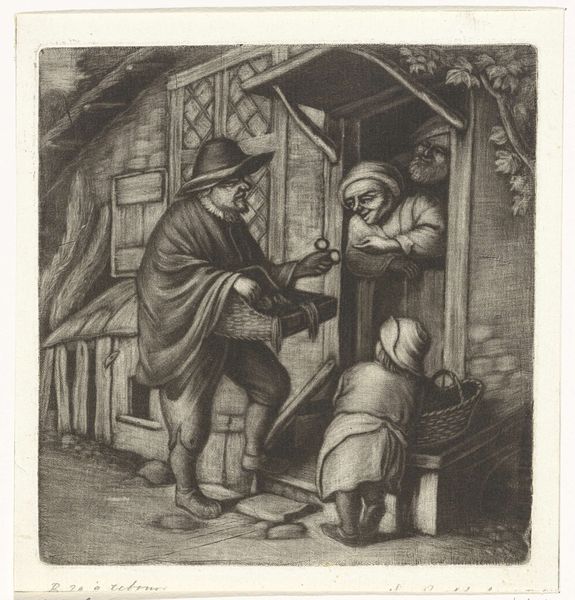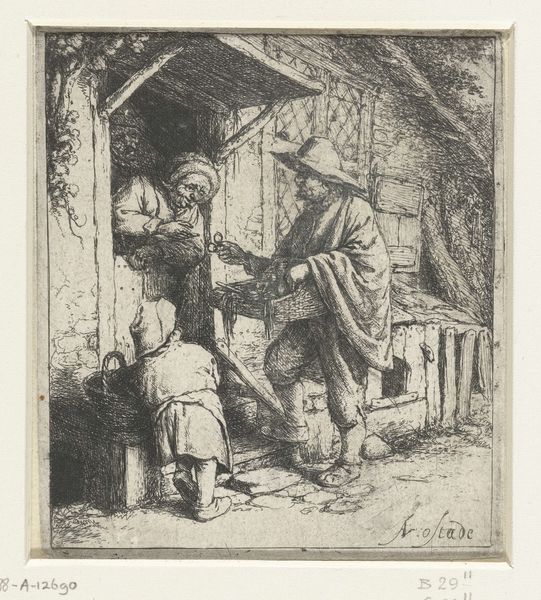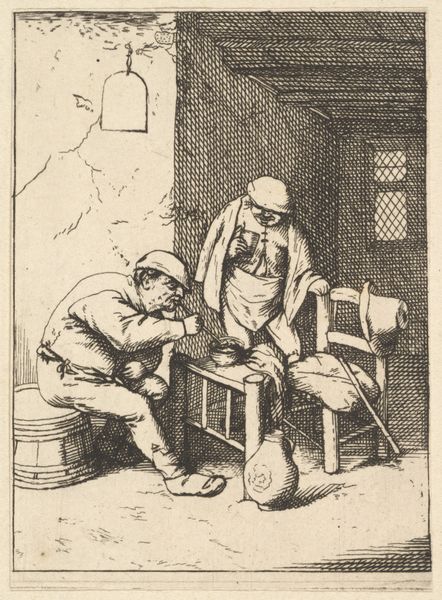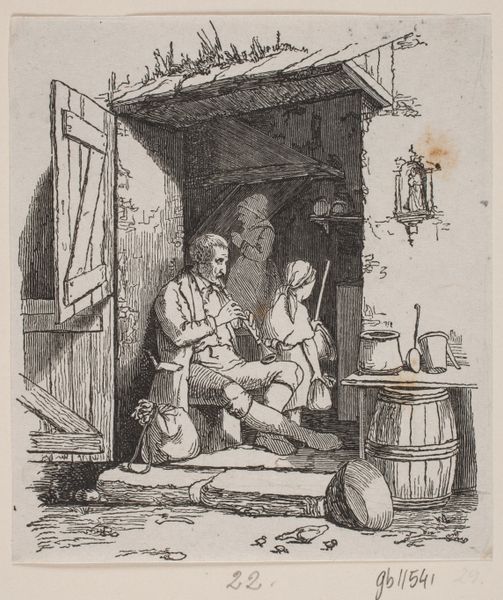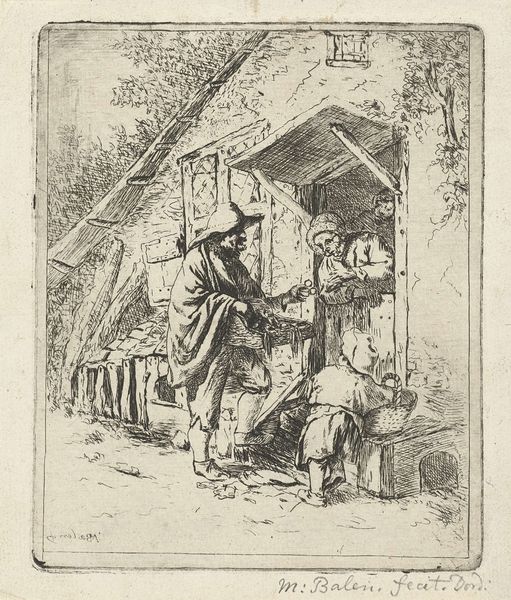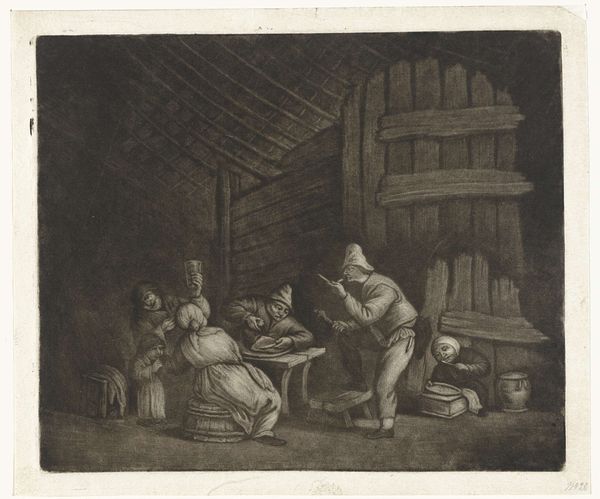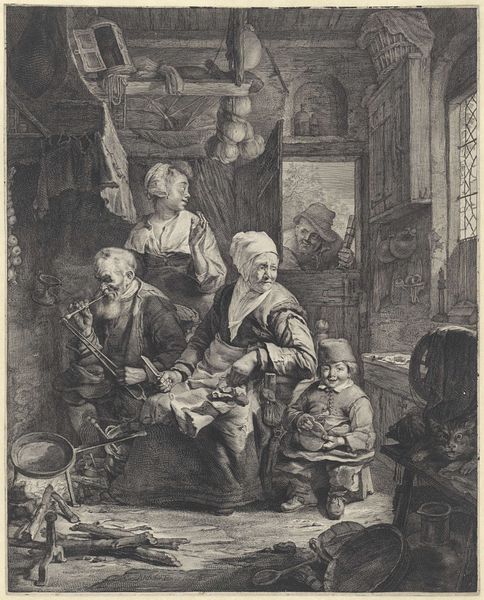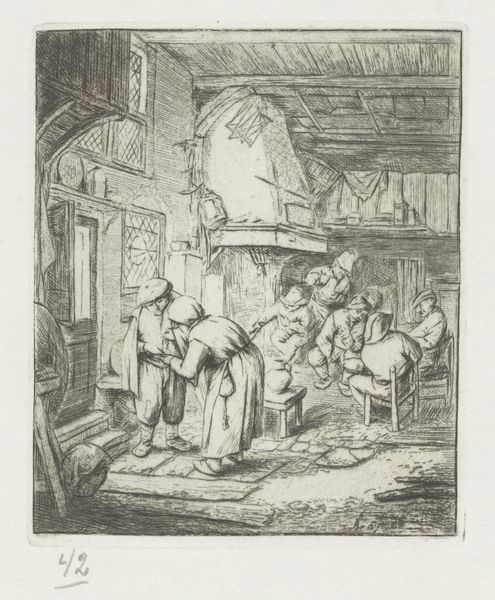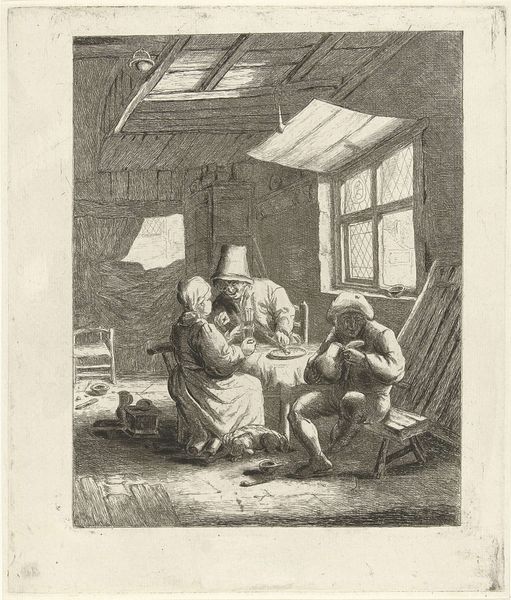
print, etching
#
portrait
#
dutch-golden-age
# print
#
etching
#
figuration
#
genre-painting
Dimensions: height 194 mm, width 156 mm
Copyright: Rijks Museum: Open Domain
Cornelis Dusart created this print, *Boer en een vrouw met kind*, using etching and scraping techniques, sometime before his death in 1704. Look closely, and you’ll see the remarkable tonal range Dusart achieved through the physical act of manipulating the metal plate. Etching involves using acid to bite lines into the metal, while scraping allows the artist to smooth areas and create lighter tones. The combination gives the scene depth and texture. Consider the setting: a humble interior, complete with a ladder, simple furniture, and earthenware jugs. These details speak to the everyday life of peasants in the Dutch Republic, a subject that was gaining popularity in art at the time. But this wasn’t necessarily a neutral observation. By focusing on the lives of ordinary people, Dusart engaged with a broader cultural interest in social class and labor. The amount of work involved in producing the scene, from the farm to the printing press, underscores the value of human effort. Ultimately, this print reminds us that art is not just about what is represented, but how it is made, and how these processes imbue artworks with cultural significance.
Comments
No comments
Be the first to comment and join the conversation on the ultimate creative platform.
